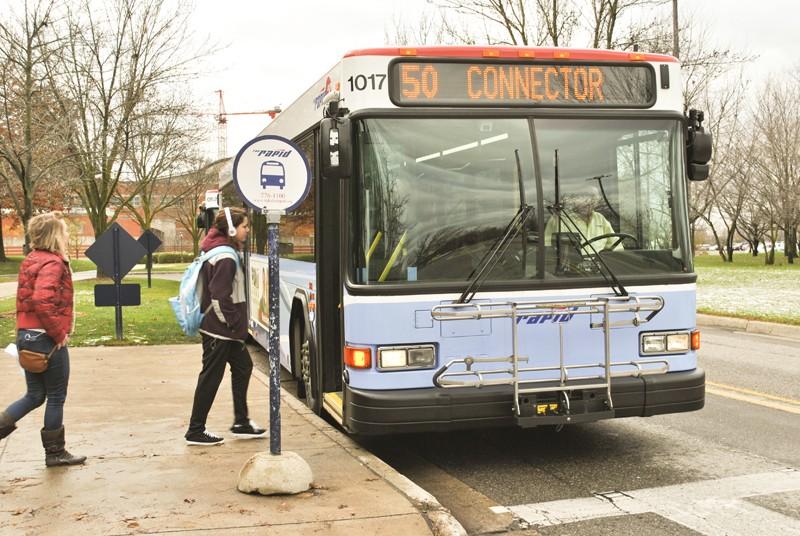New ‘Laker Line’ could replace Route 50 at GV

GVL/ Allison Young Students step onto the Route 50 Campus Connector. The Rapid, which operates the GVSU bus system, is considering replacing Route 50 with a new ‘Laker Line,’ which would extend further into Grand Rapids.
Nov 14, 2011
Due to an increase in ridership numbers, The Rapid bus system is considering the creation of a new Bus Rapid Transit line along Lake Michigan Drive.
The new line, which would be named the Laker Line, would replace the current Route 50 line that travels from Grand Valley State University’s Allendale Campus to the Pew Campus.
In October, the Interurban Transit Partnership, the transit authority that manages the Rapid, received a $600,000 federal grant to study new types of transit throughout the metropolitan area.
Currently, Alternatives Analysis, a local research group, is studying the Lake Michigan Drive corridor to determine what type of transportation will be the most efficient.
“The Rapid was awarded federal funding to study this corridor and it is unknown when it would actually be implemented,” said Mark Rambo, operations manager for Pew Campus Operations.
Conrad Venema, Rapid Planning manager, said Alternatives Analysis is studying components such as existing demand, future demand, traffic and employment around the corridor.
Alternatives Analysis will then process the information and determine what type of transportation will be the most sufficient for the corridor.
“We do not know what will be in the corridor until the AA study is complete,” Venema said.
Venema added that the study should be completed in late 2012 to early 2013.
Although the Rapid has not decided which type of transit will be implemented, a new Bus Rapid Transit line is a popular option.
Some BRT lines provide bus-only lanes during rush hour, electronic payment before passengers enter the bus and fewer stops along the bus route.
Jennifer Kalczuk, spokeswoman for The Rapid, said the idea to create BRT buses in the Grand Rapids metropolitan areas came from the Great Transit, Grand Tomorrows study in 2003.
Kalczuk added that the grant is being used to perform an alternative analysis to refine the project purpose and need, identify a locally preferred alternative transit, and to advance environmental documentation.
The Laker Line would be the second BRT line in the state. The Silver Line will be the first, running along Division Avenue in Grand Rapids, and is scheduled for completion in 2014.
“Grand Valley State University is one of the state and regional partners we will coordinate with on this effort,” Kalczuk said.
Other contributors to the project include the Michigan Department of Transportation, Kent County, Ottawa County, the cities of Grand Rapids and Walker and the Grand Valley Metro Council.





















